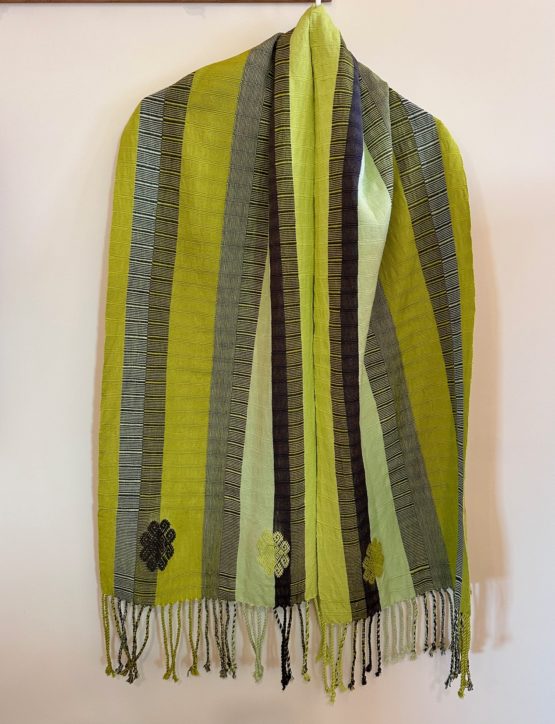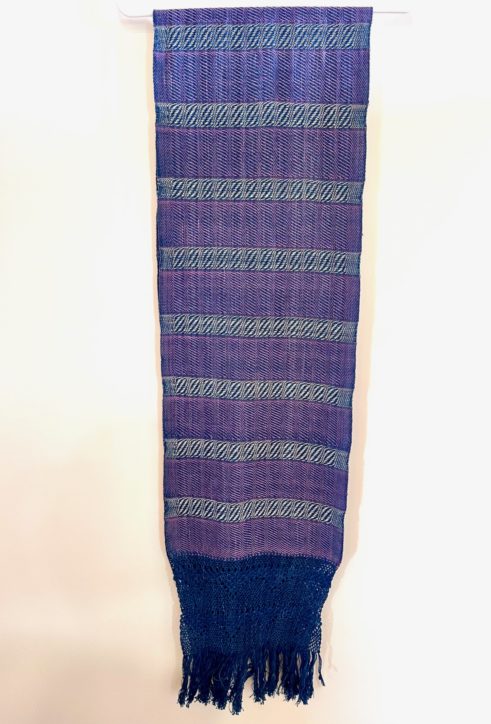Liza Bakewell takes us where we may never have thought to go: Down Mexico’s dusty back roads and cobblestone alleys, across neighborhood plazas lined with madre-derrogatory grafitti, through bustling markets, in a high speed car zig-zagging the wrong way down a one-way street, in provocative conversation with wise and deferential men, sequestered on the coast of Maine deep in contemplation, in lively debate with feminists, and befuddled and amused by encounters with people at all social and economic levels, including one’s own children.
Madre: Perilous Journeys with a Spanish Noun is not your everyday discussion about Mexico – her culture, history, politics, women’s issues (and men’s, too), language, social structure, and how a people come to define and understand self. Yet it includes all of this! Bakewell’s premise is that language informs culture and vice versa. After reading this book, I understand and agree. It opened my eyes. Mexico is an idiomatic maze and “madre” plunges us into the cultural and linguistic depths, revealing the mysteries and idiosyncracies of this most beloved and maligned noun. And, this most beloved and maligned country!

Some have described this book as a “memoir,” and in some limited respect that is true. Yet it is much more than that because the academic discussion (Bakewell is a professor of linguistic anthropology at Brown University) about the etymology of “madre” prevails throughout. But the book is flavored with slang, the vernacular, curse words, and romance. It describes her personal and professional quest to understand this most complex of Spanish nouns. It is human, engaging and real.
Most importantly, this book is entertaining, witty, clear and insightful. It is a must-read for anyone who is thinking about visiting Mexico or who is living there. Understanding the culture helps one enjoy the travel, and this will definitely bring you enjoyment before or during your stay.
Bakewell examines what the word “madre” conjures up in Mexican society, and how it defines manhood and womanhood. She takes us on a journey to explore gender roles, relationships, customs, traditions, church doctrine, and stereotypes. The perilous journey is a metaphor, I believe, for the evolution of the word — one small, simple word now infused with powerful emotion: manhood, womanhood, honor, obedience, pride, machismo, “fight to the death,” and identity, plus all that is disparaging, insulting and base.
I love Bakewell’s discussion about the dualities and conflicts of Mexican identity and womanhood as exemplified by “The Malinche” and her alter-ego counterpart, Dona Marina. They are one and the same woman, the first “bad and forbidden” and the second “baptized, good and pure.” I see this drama danced out every year in the Danza de la Pluma that reenacts the Spanish conquest of the Aztecs. Through this description, we come to understand who is the whore and who is the virgin, the themes that recur in the recesses of the language and icons hanging from every rear view mirror.
Bakewell explores the mixed messages and signals, expected behaviors, and role definitions for women and what constitutes femininity. She describes Malinche, the translator for Cortes, and how her name became synonymous with traitor and betrayal. An indigenous woman from the southern coast of Mexico enslaved since childhood, passed from one tribal group to another, she was given to Cortes by her captors. She was multilingual because of her circumstances. Yet, she was redefined during the 1857 revolution as the antithesis of the good Mexican woman. Mexican feminists are branded as Malinchistas.
Madre is about paternal creation and the power of the church to define and control. It explores the subtle meaning of Virgin and Eve, and what constitutes purity. The dilemma of madre in Mexico, according to Bakewell, is that the church believes the bride, once married is Eve, not the Virgin, and vulnerable to all the transgressions put before her. Like Eve, Malinche was the mother of the first mestizo (indigenous Indian and Spanish blend), child of Cortes. While Eve listened to the snake, Malinche listened to Cortes, betraying her people.
I imagine Liza Bakewell asked me to review this book because of my association with Oaxaca and love for Mexico. In 2009, she spent the year there on sabbatical as a single mom with her twin daughters finishing up the manuscript in preparation for publication. She talks about it being a warm, welcoming, safe and nurturing place for herself and her young children where she could bring her madre journey to a close.
Here, while she wrote, she also discovered that the liberal revolutionaries of 1857 – Benito Juarez, Melchor Ocampo, and Justo Sierra — politically reinterpreted what it meant to be a woman in Mexico. In their endeavor to liberate Mexico from the stranglehold of the Catholic church they replaced one set of padres for another.
Ocampo, in his “Epistle,” defined the virtues of woman to be “self-abnegation, beauty, compassion, shrewdness and tenderness, and must give and shall always give her husband obedience, affability, attention, comfort, advice and treat him with reverence due to the person who supports and defends us.” Ocampo’s “Epistle” became required reading at state civil marriage ceremonies until 2007, when Mexican feminists asked individual states to replace it. Most have, but Oaxaca has not. The Epistle outlines perfection and impossible expectations for women to achieve.
The quest for the meaning of “Madre” was not a straight path. Just like the taxi driver zigzagging the wrong way down a one-way street, “Madre” the book takes one turn and then another, to describe how “madre” the word came to include derogatory meanings in the Mexican Spanish language. It caused me to sit up and take notice about our own gender slurs and how we casually use them until they become embedded in the vernacular and we are no longer conscious of the meaning.
Just as you are beginning to think that you understand, Bakewell starts a discussion about the articles “el” and “la” and “los.” Spanish is organized by the system of la and el,” she says. If you are confused about which article to use, consider el amor (love), el sexo (sex), el matrimonio (marriage), el prenado (pregnancy), el embarazo (pregnancy), el parto (childbirth) and el nacimiento (birth). Why are these words “masculine?” she asks. A friend of Bakewell’s who studied Indo-European languages, traces it to the concern about descent lines – the patrilineage. Culture and language are powerful padres.
Finally, Bakewell asks us to consider the origins of madre and padre. She delves into the sounds of mmmmmm and ppppppp. MMMMMmadre. PPPPPPPPpadre. She takes us to the very essence of birth, identity, survival and continuity. She describes the mmmm sound as internal, humming, soothing, nurturing and nourishing. Pppppppppadre is the force of spitting out, putting one’s imprimatur in the world, the first attempt at aggressiveness for what we must do to make our way as human beings. One is internal and the other external, almost synonymous with how our bodies and reproductive organs are purposed. She describes how the sound origins across languages and cultures are consistent. Fascinating. Try these sounds and you’ll see what I mean.
Anyone who travels to or lives in Mexico, studies Latin American culture, history, art, Spanish language, or anything related MUST read this book. Furthermore, there are no madre insults in Italy and very few in Columbia, Chile and Argentina.
Madre IS made in Mexico.
And, if you want to know the expletives, you’ll have to read the book! They are plentiful.
Madre: Perilous Journeys with a Spanish Noun, by Liza Bakewell, W.W. Norton & Company, 2011. ISBN 978-0-393-07642-4. You can order the book direct from Dr. Bakewell.
Like this:
Like Loading...




























Women Weavers’ Cooperative Vida Nueva, Teotitlan del Valle, Oaxaca: Part Two
This post continues the narrative about women weavers in Teotitlan del Valle, Oaxaca. See Part One for my introduction.
Honoring Mother’s Day: For all women who gave and received life!
***
Vida Nueva (“New Life”) Cooperative at the International Folk Art Market
Twenty years ago, Vida Nueva cooperative was founded by six single women from the same extended family group, three of whom where sisters. Some of the women had husbands who never returned to Teotitlan del Valle, Oaxaca, after migrating out for work. Some had not married. Some were widows. They needed to support their families and weaving had the biggest potential economic reward for their labor.
But, weaving was not women’s work.
Pomegranate dyed wool
The traditional role for women was (and still is, for the most part) to stay at home, keep house, tend the children, cook and raise small animals like chicken, sheep, pigs and goats.
Twenty years ago, weaving and then selling/marketing the product was not a usual role for women, plus it was unheard of to go to the city to develop customers. Most women of the time went barefoot, wore indigenous dress and did not go beyond the family compound expect to daily market. Entering the city was foreign, uncomfortable, intimidating.
Cleaning the finished rug
Since the height of the Bracero program, when men migrated to the U.S. as temporary farm workers, and women learned to weave out of economic necessity, the number of women who now weave is substantial. Today, most women work alongside husband, father or brother, to weave in a family centric enterprise. A few also participate in selling and receive recognition for their contributions.
It took a while for Vida Nueva to get started, but they had the help of a non-governmental agency, Grupo del Apoyo a la Educacion de la Mejor (now defunct). Through donations and business development guidance, Vida Nueva began producing rugs for sale in 2001. Their first clients, arranged by the NGO, were adult Spanish language students who were visiting Oaxaca from the United States.
Take a One-Day Natural Dye Weaving & Textile Study Tour
The cooperative meets regularly, makes decisions together, created a mission statement, a vision, goals and objectives for the organization that includes a marketing plan, and have built distribution markets over time. They also put money aside each year to invest in an annual community project that can benefit everyone in Teotitlan del Valle.
Using the stone metate to crush indigo to powder for dye
Not all the rugs woven by Vida Nueva are made with natural dyes. Most are woven with synthetic colors because most buyers don’t want to pay the price for a naturally dyed rug and prefer bright, electric colors. But, the cooperative will do custom orders for naturally dyed rugs and from time-to-time, may have some on-hand.
Today there are 12 cooperative members, two of whom are married. Their clientele has developed by word of mouth over the years, and they also have been invited to participate in shows/sales in the U.S.A. including the International Folk Art Market and the Feria at Lake Chapala, Mexico Arts Show.
Vida Nueva Women’s Cooperative Contact Information
Pastora Gutierrez
Centenario 1
Teotitlán del Valle, Oaxaca
estrelladelvalle@hotmail.com
Telephone: 951 524-4250
Some Useful Resources
Like this:
Comments Off on Women Weavers’ Cooperative Vida Nueva, Teotitlan del Valle, Oaxaca: Part Two
Posted in Cultural Commentary, Oaxaca rug weaving and natural dyes, Teotitlan del Valle, Textiles, Tapestries & Weaving, Travel & Tourism
Tagged Bracero program, cooperatives, economic development, Mexico, Oaxaca, social history, sociology, Teotitlan del Valle, Vida Nueva, weavers, weaving, Women, women's studies